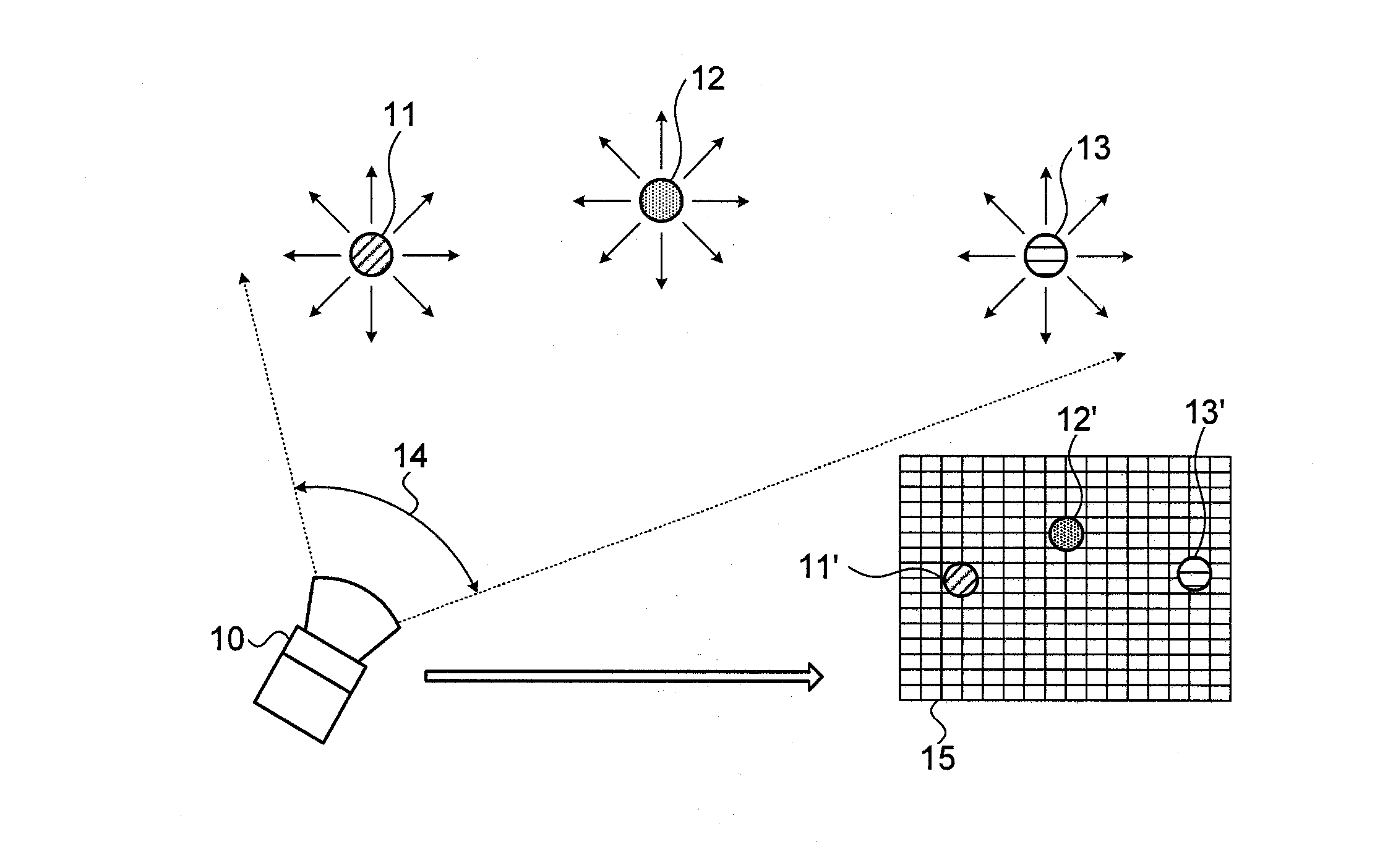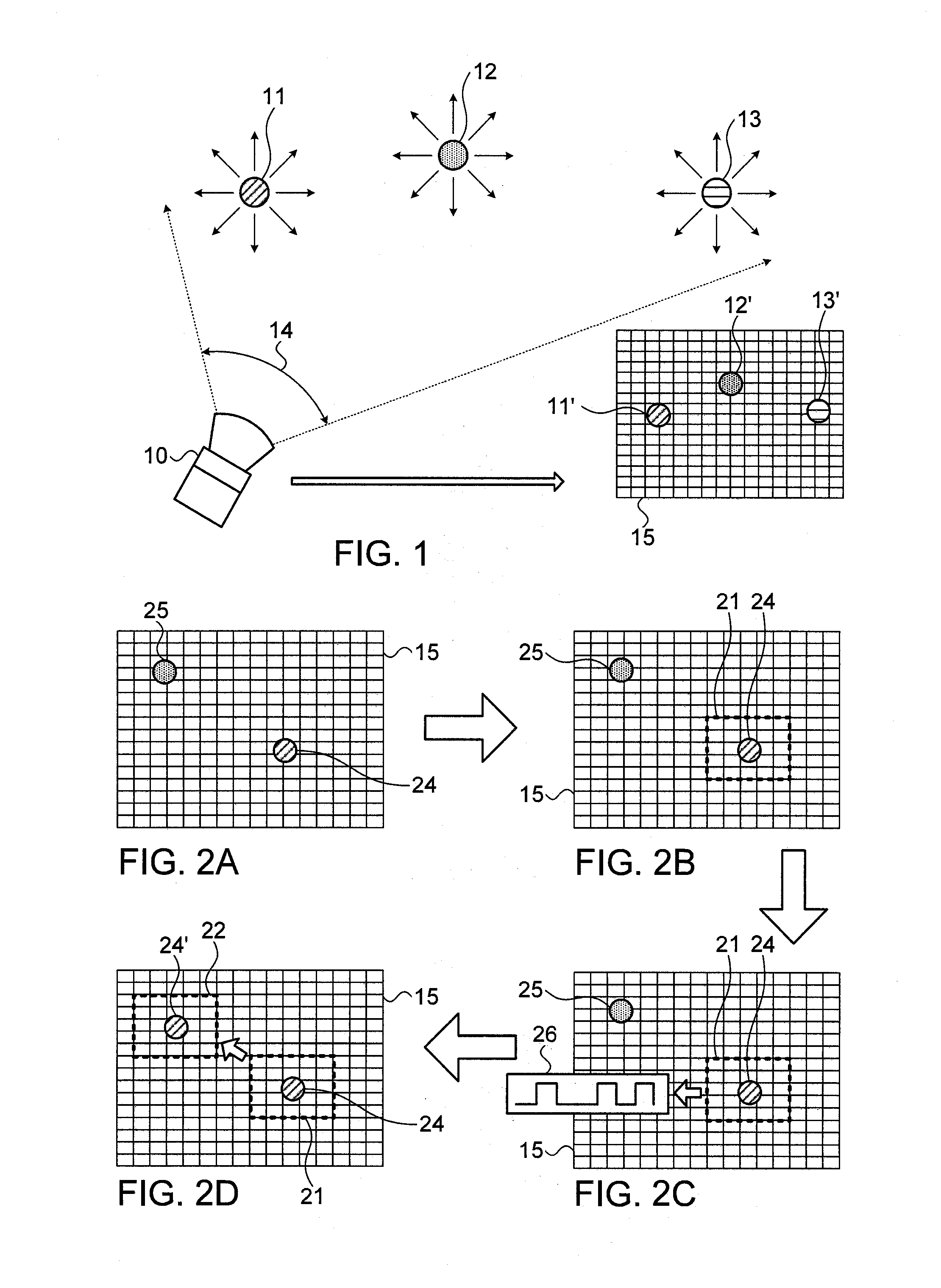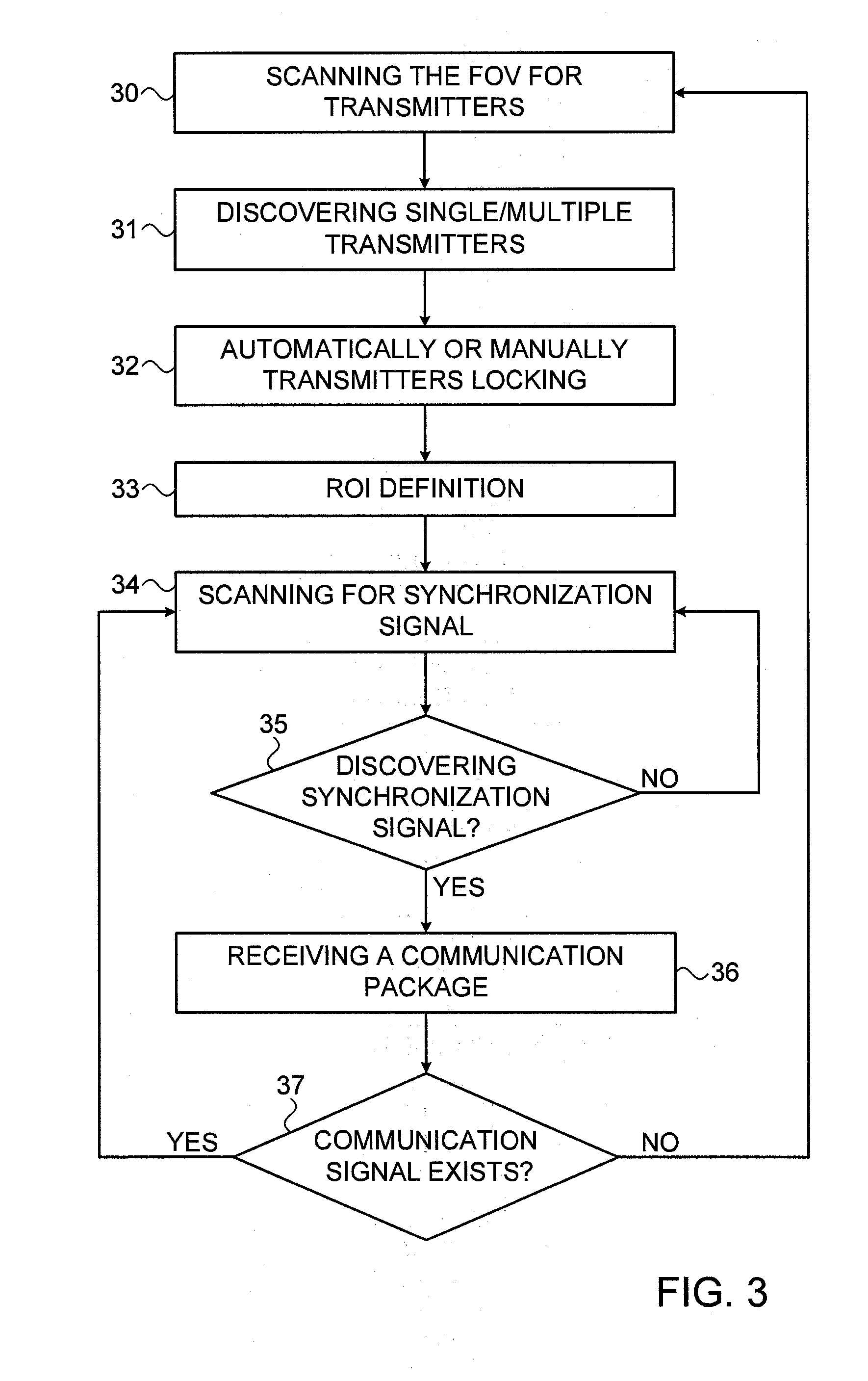Free space optical communication system
a communication system and optical communication technology, applied in the field of optical communication systems, can solve the problems of high cost of a photomultiplier detector, difficult use of a single detector receiver, and inability to meet the needs of a large number of users, so as to improve the frame rate, increase the frame rate, and improve the frame rate
- Summary
- Abstract
- Description
- Claims
- Application Information
AI Technical Summary
Benefits of technology
Problems solved by technology
Method used
Image
Examples
Embodiment Construction
[0038]Reference is now made to FIG. 1, which illustrates schematically a scenario illustrating the way in which the receiver unit 10 of a communication system of the present application, surveils the scene in front of it over a large field of view 14, looking for transmitters whose operators may be attempting to communicate with the receiver. The transmitters will generally be light sources based on a single emitter laser diode or a laser diode array, modulated, using the serial communication signal which it is desired to transmit to the receiver. In the scenario of FIG. 1, several such transmitters 11, 12, 13, have been located in such a scan, and are imaged on the image sensor array 15 of the video camera in the receiver 10 as signal spots 11′, 12′13′, each of which could cover one or more pixels of the sensor array. Detection and identification of the transmitter sources can be performed by means of the coding and detection methods shown in International Patent Application publis...
PUM
 Login to View More
Login to View More Abstract
Description
Claims
Application Information
 Login to View More
Login to View More - R&D
- Intellectual Property
- Life Sciences
- Materials
- Tech Scout
- Unparalleled Data Quality
- Higher Quality Content
- 60% Fewer Hallucinations
Browse by: Latest US Patents, China's latest patents, Technical Efficacy Thesaurus, Application Domain, Technology Topic, Popular Technical Reports.
© 2025 PatSnap. All rights reserved.Legal|Privacy policy|Modern Slavery Act Transparency Statement|Sitemap|About US| Contact US: help@patsnap.com



